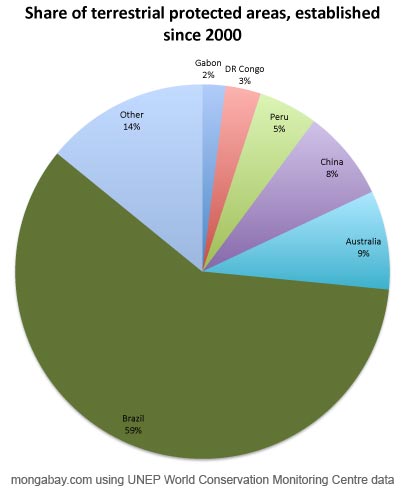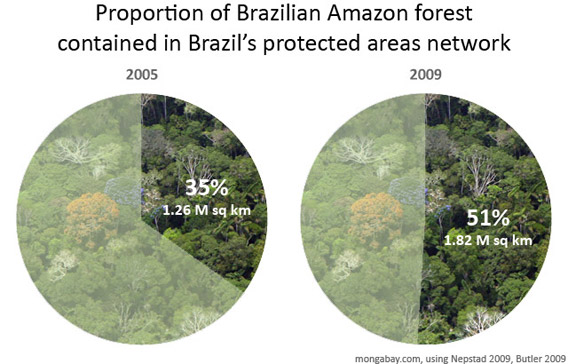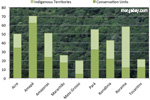Brazil’s conservation units are poorly run and in need of better funding, finds a new study published by Brazil’s Ministry of the Environment and the United Nations Environment Program (UNEP). The assessment, released last week, concludes Brazil’s protected areas system should be open to creative management solutions.
The study reveals that Brazil’s protected areas, the majority of which are in the Amazon, operate with sparse workforces and under insufficient budgets. Brazil protects 1,278,190 km² of land, making it the fourth-largest system of preserved areas in the world, but many areas are protected in name only, lacking the resources to ensure their conservation status. According to the Chico Mendes Institute, federal conservation units protect 8.5 percent of Brazil’s land, but Brazil is behind poorer and smaller nations—not to mention the US—in its financial investments in conservation and commitment to the sound management of conservation areas.
 |
The annual budget for Brazil’s federal conservation units is R$300 million ($185 million)—an amount that has not increased nominally since 2001 , despite Brazil’s addition of 869,360 square kilometers in new protected areas during that time (accounting for more than 60 percent of protected areas established in the period). This funding provides an annual spending of R$4.43 ($2.73) per hectare, enough for one federal official for every 186 km² of protected forestland. In comparison, the United States has an employee for every 21 km² of federally protected conservation areas and spends thirty-five times as much per hectare annually. Even Costa Rica, which has a smaller overall budget than Brazil, has an official for each 26 km² of protected land and spends an average of $R 31.29 ($19.28) per hectare annually.
The study also found a large discrepancy between annual funding for conservation units and the financial resources they generate. Brazil’s conservation areas provide more than R$4 billion ($1.6 billion) to the government through the legal extraction of wood and rubber, as well as tourism in national parks and forests.

|
Braulio Dias, Secretary of Biodiversity and Forests in the Ministry of Environment, says that Brazil will have to use creativity to improve management and protection of the country’s natural areas. He believes it will be impossible for Brazil to achieve the level of protection existent in the U.S. with current budgeting allocations. Dias suggests that academic institutions and NGOs manage conservation units jointly, a proposal supported by many institutions in Brazil and already in place in two national parks, Serra da Capivara in Piaui and Jaú in Amazonas. Another proposal, from the Chico Mendes Institute for Conservation, is to outsource the management of tourism to ensure that federal employees in protected areas are focused solely on conservation.
Related articles
Protected areas cover 44% of the Brazilian Amazon

(04/20/2011) Protected areas now cover nearly 44 percent of the Amazon — an area larger than Greenland — but suffer from encroachment and poor management, reports a new study by Imazon and the Instituto Socioambiental (ISA). The report, published in Portuguese, says that by December 2010, protected areas in the Brazilian Amazon amounted to 2,197,485 square kilometers. Conservation units like national parks accounted for just over half the area (50.6 percent), while indigenous territories represented 49.4 percent.
Brazil: king of conservation, deforestation for the 2000s

(12/21/2009) Brazil set aside more land in protected areas than any other country during the 2000s, accounting for nearly 60 percent of total terrestrial conservation during the decade, according to mongabay.com’s analysis of data from the U.N Environment Program and the World Conservation Monitoring Center. Paradoxically, Brazil also lost the most forest of any country during the decade.